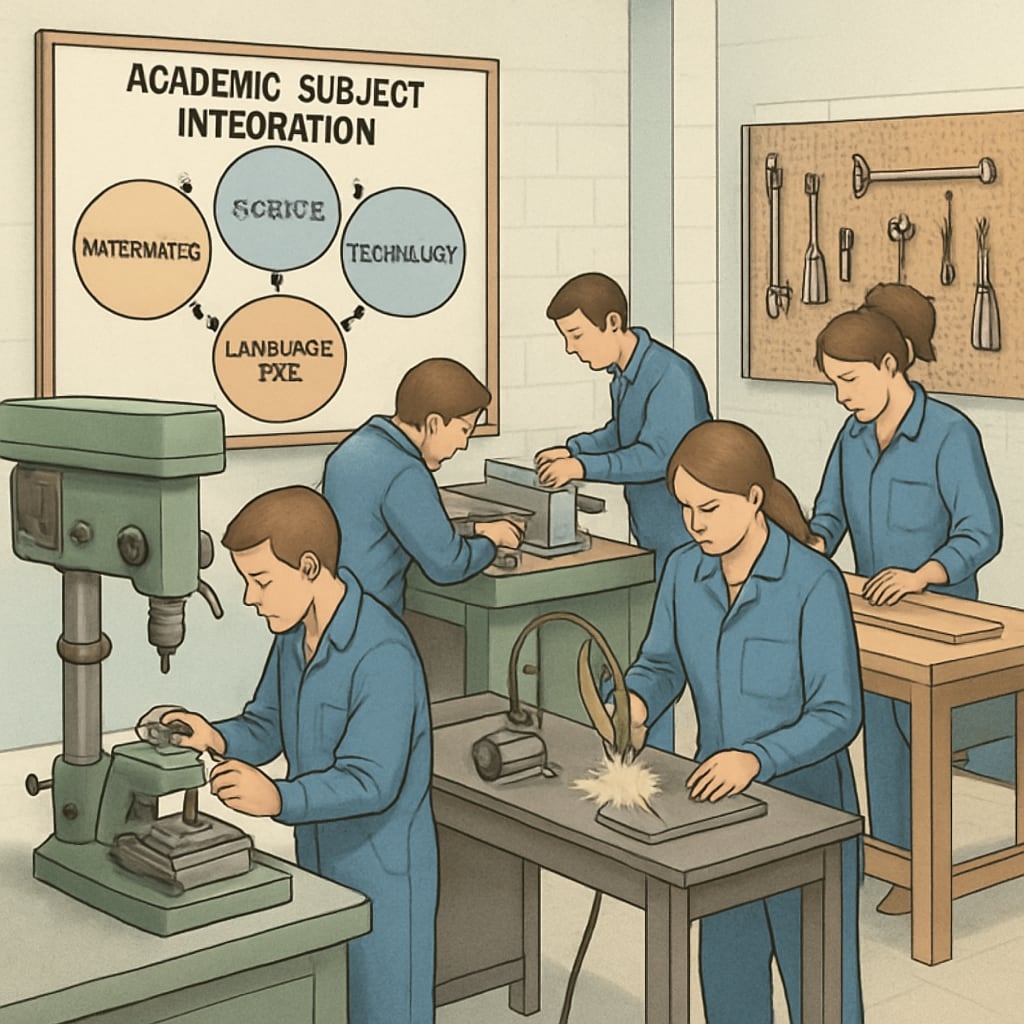In today’s rapidly evolving education landscape, achieving harmony between vocational education, academic learning, and balanced education structures remains a pressing challenge for schools. Vocational education equips students with practical skills critical for the workforce, while traditional academics nurture intellectual growth and cultural competencies. Combining these two approaches can create a holistic learning experience that prepares students for both career success and lifelong learning.

The Complementary Relationship Between Vocational and Traditional Education
Vocational education and traditional academics are not opposing forces; rather, they serve as complementary components of a well-rounded education system. For example, vocational training in fields like engineering or healthcare can be enhanced through foundational academic subjects such as mathematics and biology. Similarly, problem-solving skills developed in academic settings can be applied effectively in vocational scenarios.
According to Britannica, education systems that blend theory with practical application often produce students who are more adaptable to real-world challenges. Countries like Germany have successfully implemented dual education systems that integrate vocational training with academics, showcasing the potential benefits of this approach.
Implementation Strategies in Different School Districts
Different school districts approach the integration of vocational and academic education uniquely. For example, some schools offer elective vocational courses alongside traditional subjects, allowing students to choose pathways that align with their interests. Others adopt project-based learning models, incorporating vocational tasks within academic frameworks.
A notable example is the Career and Technical Education (CTE) programs in the United States. These programs blend classroom learning with practical training, as highlighted on Wikipedia. Schools implementing CTE often collaborate with local businesses to provide students with hands-on experiences, bridging the gap between education and employment.

Practical Steps Toward Curriculum Integration
To achieve a balanced education structure, schools can follow these practical steps:
- Cross-disciplinary curriculum design: Schools should consider integrating academic subjects into vocational courses. For example, teaching technical writing within a vocational program for mechanical engineering can enhance communication skills.
- Teacher collaboration: Academic and vocational instructors can work together to design lessons that address both practical skills and theoretical knowledge.
- Industry partnerships: Collaborating with local businesses ensures vocational programs remain relevant to current workforce demands.
- Modern technology integration: Using tools like virtual labs or simulation software can enhance both academic and vocational learning experiences.
These strategies not only enrich the learning experience but also ensure students are better prepared for the complexities of modern careers.
Challenges and Opportunities in Balancing Education Structures
While the integration of vocational education and traditional academics offers significant benefits, it also presents challenges. Resource allocation, teacher training, and curriculum design require careful planning and investment. However, the opportunities far outweigh these obstacles.
By developing adaptable curricula and fostering partnerships between educators, businesses, and policymakers, schools can create an education system that caters to diverse student needs. As a result, learners are empowered to pursue both academic and vocational success, fostering a generation of well-rounded individuals.
In conclusion, balancing vocational education and traditional academics is not merely a logistical challenge but a vision for the future of education. Schools that embrace this approach can prepare students for multifaceted careers while equipping them with the intellectual and practical tools needed for lifelong success.
Readability guidance: This article uses concise paragraphs, bullet points for clarity, and a mix of examples and theoretical insights. Active voice is prioritized, with limited passive constructions for readability. Transition words are used throughout to ensure seamless flow.


